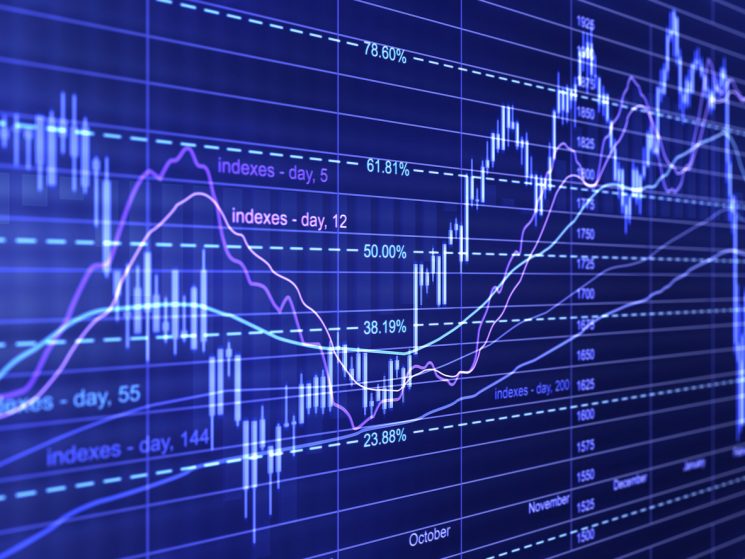There are two major reversal patterns in financial markets: the chart reversal pattern and candlestick reversal patterns. While chart reversal patterns happen due to the price movement of an asset over a given period, candlestick reversal patterns occur because of the formation of candlesticks.
Candlestick reversal patterns refer to the arrangement of candlesticks in such a way that it indicates the end of the current trend, whether it is an uptrend or a downtrend. This means that when a reversal pattern appears in an uptrend, traders are alerted to the impending start of a downtrend and vice versa when such a reversal pattern appears in a downtrend.
These reversal patterns are valuable tools for trading because they provide additional information that can help a trader make effective trading decisions. When you can predict the start of a new trend before it becomes full-blown, you can protect your existing profits and build on them when you take advantage of the early trend.
In addition, there are different types of candlestick reversal patterns, and we’ll discuss the most powerful reversal candlestick patterns you can add to your strategy.
Reversal Candlestick Patterns
-
Harami Patterns
The Harami pattern is a reversal pattern that is usually relied on during forex trading or crypto trading. It is a two-candlestick formation, with the first candlestick being big enough to fully engulf the second one. To identify the impending trend reversal, there are two types of Harami candlestick patterns:

Bullish Harami Pattern:
This pattern appears at the end of downtrends, and the formation begins with a long bearish candle followed by a shorter bullish candle. The first candle should completely engulf the second one, and the price gaps up after the bearish candle, but in the case of crypto trading, there may not be a price gap after the bearish candlestick.
Identifying the pattern alone isn’t enough for trading if you want to manage the risks involved in making trades. For the pattern to be confirmed, the candle that comes after the formation should be a bullish candle that closes above the second candle in the formation.
When the reversal is confirmed, a trader can take a short trade, and a stop-loss order can be placed below the first bearish candle to manage the risks.
Bearish Harami Pattern:
The bearish Harami pattern appears at the end of an uptrend and signals to traders that there is an impending downtrend. This reversal pattern has two candlesticks, and the first one is a large bullish candle followed by a smaller bearish candle that is engulfed by the first one.
Like the bullish Harami, getting confirmation from the third candle is crucial before entering a trade. To know whether the impending trend is going to continue, the subsequent candle that appears should be a bearish candle that closes below the previous candle.
When this happens, the trader can sell their existing position and set their stop-loss order above the first candle in the bearish Harami formation.
Traders tend to favor this pattern because it offers a positive risk-reward ratio when they capitalize on it, and this pattern is easy to identify in charts.
2. Island Reversal Pattern
The Island reversal pattern is created when the price action of an asset separates a group of candlesticks from the rest. The formation may also contain just one candlestick, and when it appears, it indicates that a trend is approaching its end. The island reversal formation is usually associated with news-related events that happen after-hours trading or in the pre-market.
Experts on the Island Reversal pattern suggest being executing a buy order or sell order depending on where the reversal pattern appears on a chart. In a bearish formation, the stop-loss order can be placed below the highest point of the pattern, and for a bullish formation, the stop-loss order can be placed at the lowest part of the pattern.

It is generally regarded as a reliable reversal pattern for trading in financial markets like the forex market or stock market, and it can appear in different time frames. It rarely occurs, but when it does, there will be a subsequent surge in the volume of the asset.
To identify an island reversal pattern, it’s advisable to first determine the prevailing trend followed by two price gaps at the beginning and end of a group of candlesticks. If it is in a downtrend, the reversal pattern will appear at the end of the downtrend, and it is a signal for traders to buy with regard to the impending uptrend.
Where the existing trend is an uptrend, the reversal pattern will appear at the top of the chart, and it is a signal for traders to sell.
Even though the pattern is reliable to a certain extent, it can also be unpredictable, which is why you should confirm the potential reversal and accuracy of the pattern with technical indicators.
3. Engulfing Candlestick Patterns
The Engulfing candlestick pattern is a two-candlestick reversal pattern that signals the end of the existing trend. In this formation, the second candle is larger than the first to the point that it completely engulfs or covers it. In a perfect engulfing candlestick pattern, no part of the first candlestick can surpass the shadow of the second candle.

Engulfing patterns can also be regarded as lagging technical indicators because they appear after price action, and this pattern comes in two forms:
Bullish engulfing candlestick pattern:
A bullish engulfing pattern appears at the end of a downtrend and indicates that more buyers are entering the market, which in turn drives the price up. The first candle in this pattern is a short bearish or red candle followed by a much larger bullish candle (appears as a green or white candle).
Bullish engulfing patterns are more accurate when they come after four or more red candles. Traders should always check the preceding candles for confirmation of the reversal before trading so that they can get an edge in the market.
Bearish engulfing candlestick pattern:
A bearish engulfing pattern appears at the end of an uptrend and indicates an increase in selling pressure. The first candle in this pattern is a short bullish candle followed by a larger bearish candle, which signals traders to open a short position in the market and close their long position.
Engulfing patterns may not appear at the end of a trend, and when this happens, it should be viewed as a continuation of the existing strong trend.
4. The Hammer Pattern
The hammer pattern is a one candlestick formation that provides insight into reversals. The candlestick itself looks like a hammer with a small body, little or no upper wick, and a long lower wick.
Another variation of the pattern is the inverted hammer which has a long upper wick and small body with little or no lower wick. The inverted hammer delivers the same signal as the normal hammer as they are both bullish reversal patterns.

The hammer pattern is favored by traders because it works well in all financial markets and can be used in different time frames, making it a good choice for day trading and swing trading.
Plus, it works well with technical indicators like RSI, MACD, trendlines, Fibonacci, and moving averages, and when used for technical analysis, they can highlight profitable entry points into the impending trend.
5. The Doji Candlestick
The Doji candlestick reveals indecision in the market where neither the buyers nor sellers are in control. It occurs when the opening and closing price of an asset is at the same level with a little or nobody.

In a perfect situation, the upper and lower wick of the Doji is the same length, but this doesn’t happen all the time, causing different variations of the pattern to appear:
-
Long-legged Doji:
The upper and lower wicks or shadows that are the same length or almost the same. Since the market is at equilibrium, it shows the indecisiveness of buyers and sellers.
-
Dragonfly Doji:
The Dragonfly Doji looks like a “T” with a short upper wick and a long lower wick, signifying that an asset opened and closed at day’s high. It shows that there was increased selling during the trading hours, but the buyers were able to absorb the buying pressure and keep the price up.
If the current trend is an uptrend, the appearance of the dragonfly means that there could be a potential reversal. The same applies when it appears in a downtrend.
-
Gravestone Doji:
This looks like an inverted “T” with a long upper wick and a little or no lower wick. It indicates that the asset’s opening and closing prices are the same as the day’s low. This type of Doji is a bearish pattern and is a signal for traders to close their existing positions.
It is crucial to use the Doji pattern with technical indicators, and you should only trade with it after the potential reversal trend has been confirmed.
Conclusion
Reversal candlestick patterns are instrumental in helping traders understand the direction of the market. Plus, the reversal patterns also make it easier for traders to see the crucial aspects of each trading period and create strategies to take advantage of what is about to come. However, confirmation of the pattern should be done first to manage the risks associated with trading.





